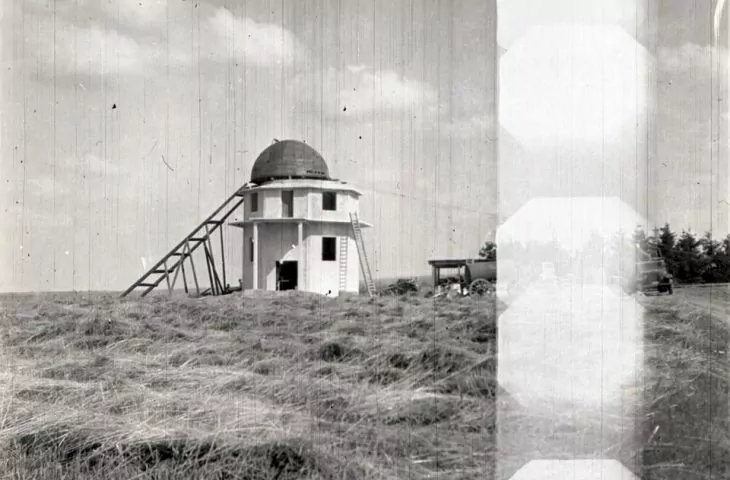The astronomical observatory of the Institute of Astronomy at the Nicolaus Copernicus University in Piwnice near Toruń has been entered in the register of monuments. Located only a dozen kilometers from the astronomical capital of Poland, the complex of the radio astronomy center designed by architect Konrad Kuczy-Kuczynski is a neoclassical architectural gem.
buildings, pavilions and neoclassical gardens
The historic observatory complex includes the scientific and residential building from 1954-1957, four observatory pavilions from 1948, 1954-1957 and 1961-1962, the radio astronomy center building from 1972-1973, the park surrounding the observatory with an access alley, and the surroundings of the radio astronomy building. The decision to include the building complex in the register of monuments was made by Sambor Gawinski, the Kuyavian-Pomeranian provincial conservator of monuments.
The observatory is a material witness to the establishment and development of astronomy at Nicolaus Copernicus University in Torun, created by the scientific staff of Stefan Batory University who arrived by repatriation trains in 1944 from Vilnius.Maintained in the style of international modernism, the radio astronomy building designed by Konrad Kucza-Kuczynski is clearly inspired by Scandinavian modernist architecture, especially the work of Finnish architect Alvar Aalto, to whom it owes the rejection of the brutality of raw concrete and its replacement with brick, as well as the introduction of wood, both on the facades and as interior cladding
- is stated in the justification of the decision by conservator Sambor Gawinski, on the website of the provincial conservator of monuments.
The park, with its numerous exotics, such as balsam ambergris, geranium and American tulip tree, as well as observatory pavilions, built in the neoclassical style in the central plan, is a unique marriage of science, art and nature shaped by human hand.
Bird's eye view of the observatory | © WikiCommons
In his justification, the conservator stresses that all elements of the astronomical observatory in Piwnice have a high degree of preservation of authentic historic substance.
plan borrowed from Vilnius
Among the pioneers of local astronomy were Professor Wladyslaw Dziewulski (1878-1962) and Associate Professor Wilhelmina Ivanova (1905-1999). They were the founders of the astronomical observatory in Vilnius Zakret, and even then the complex was distinguished by the unique architectural layout of the park, neoclassical botanical gardens. The idea of the complex there was practically copied in Piwnice near Turin.
Here, construction of the first pavilion with a rotating dome with a diameter of 5 meters began in the fall of 1947. In 1949, a telescope sent from Cambridge, USA, arrived there - the so-called Draper astrograph, which gave rise to professional astronomical observations at the Nicolaus Copernicus University.
Initially, the astronomical plot was small, and around the rniej stretched farmland. Soon afterwards, Professor Dziewulski made sure that the grounds were wooded and the surroundings, in the form of gardens, were suitable for work.
Winter at the astronomical observatory in Piwnice, 1970s. (photo from the collection of the Institute of Astronomy at the Nicolaus Copernicus University)
an astronomer in collaboration with an architect
It was astronomer Dziewulski who determined the first points of construction, the plans for the garden. He collaborated with the architect, Konrad Kuczy-Kuczynski, strongly inspired by Scandinavian architecture at the time. The construction and implementation of the dome, technically complex - rotating and opening, was undertaken in 1947 by the Torun mechanical workshop of Eng. Jan Broda. The dome, sliding on wheels, with two wings, a tin apron under the dome and a balustrade, had to be set on the brick pavilion where the astrograph was intended to be placed.
In 1949, a telescope sent from Cambridge went there, which made it possible to initiate professional astronomical observations at the University. The scientific and residential building dates from the 1950s, and in the early 1970s a radio astronomy center building was erected, along with a park surrounding the observatory.
The astronomical observatory of the Astronomy Institute of the Nicolaus Copernicus University in Piwnice is currently a complex of a didactic and educational nature, and remains closed until the facilities are opened and restrictions (ongoing due to the pandemic) are lifted. Its inclusion in the register of monuments is sure to attract not only astronomy enthusiasts, but also draw attention to the unusual architecture.































